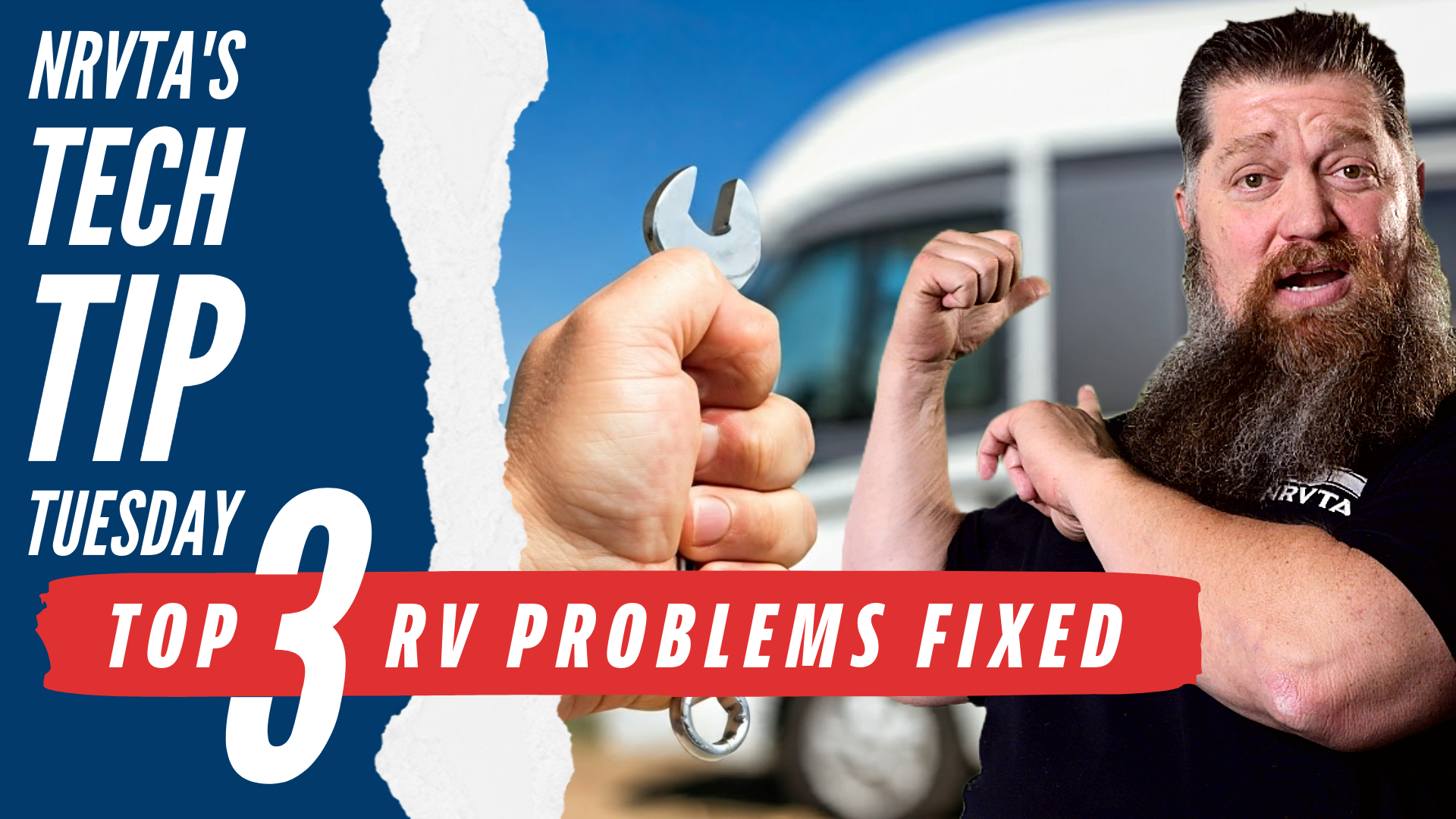Get your RV Technician Certification in as little as 5 weeks!

Welcome to another Tech Tip Tuesday, brought to you by the National RV Training Academy (NRVTA)—the largest hands-on RV training academy in America!
On Location at the National RV Training Academy
This is Todd, coming to you live from Week One of training at NRVTA. Right now, we’ve got labs in session, where students break down assignments and get hands-on experience before heading back into the classroom for fundamental lessons.
Today, I’ll be answering some of the most common RV questions we’ve received. Let’s get started!
1. Water Heaters & Pressure Relief Valves
Question from Desire Rogers: “I’ve been reading suggestions for people to open the pressure relief valve while filling the tank. Is this incorrect since it would potentially eliminate the necessary air gap?”
Answer: Great question! When using an RV water heater, heat causes the water to expand. Even if it’s not boiling, it still needs space to expand without over-pressuring the system.
To create the necessary air expansion pocket, you actually should open the pressure & temperature (P&T) relief valve while filling the water heater. This allows excess air to escape. Once water starts coming out of the valve, close it—your air gap is now properly set. If you skip this step, you might run into air hammer issues down the line.
Hope that helps!
2. Awning Won’t Extend Fully?
Question from Dave Smith: “I have a Momentum 351 rear awning that won’t go out all the way. Is there an adjustment for this?”
Answer: Yes and no.
If your awning isn’t extending fully, the first step is to have a qualified technician inspect it. However, the likely cause is that the motor is amping out due to excessive tension.
A common issue is that too many rotations were set during installation. Inside the awning, there’s a spring that applies counterforce as it extends. If there are too many pre-set rotations, the awning will never fully open.
⚠️ Warning: Adjusting the awning tension is not DIY-friendly—it’s a finger breaker! If you don’t have the expertise, you could get injured while trying to adjust the tension spring. If your awning isn’t fully extending, get a professional to check it out.
3. Choosing the Right Lithium Battery for Your RV
Question from Norma Reed: “I’m upgrading to lithium batteries and an inverter. I’m debating between a large 300Ah battery and a smaller footprint lithium battery with the same amp hours. Is the added cost of the large battery worth it?”
Answer: It depends on performance and space considerations.
Key Factors to Consider:
- Energy Density: All quality lithium batteries have similar energy density. A 300Ah battery, whether large or small, contains the same amount of lithium.
- Performance Differences: Check the charge & discharge rate. A high-quality battery should have a 100A–300A charge/discharge rate.
- Footprint & Installation Space: If space is a concern, a smaller footprint battery may be more practical.
- Battery Management System (BMS): This determines how efficiently the battery charges and discharges. Since you’re using a 4,000W inverter, opt for a high-performance battery with a robust BMS.
Final Verdict:
Check the battery’s data plate to compare charge/discharge rates. If you need fast charging and high performance, a premium battery with better specs is worth the investment.
Final Thoughts
Thanks for tuning in to Tech Tip Tuesday! Keep sending in your questions, and I’ll keep answering them. Whether it’s water heaters, awnings, or lithium batteries, we’re here to help you keep your RV running smoothly.
Get Registered Today!
Talk to a student advisor to learn more!